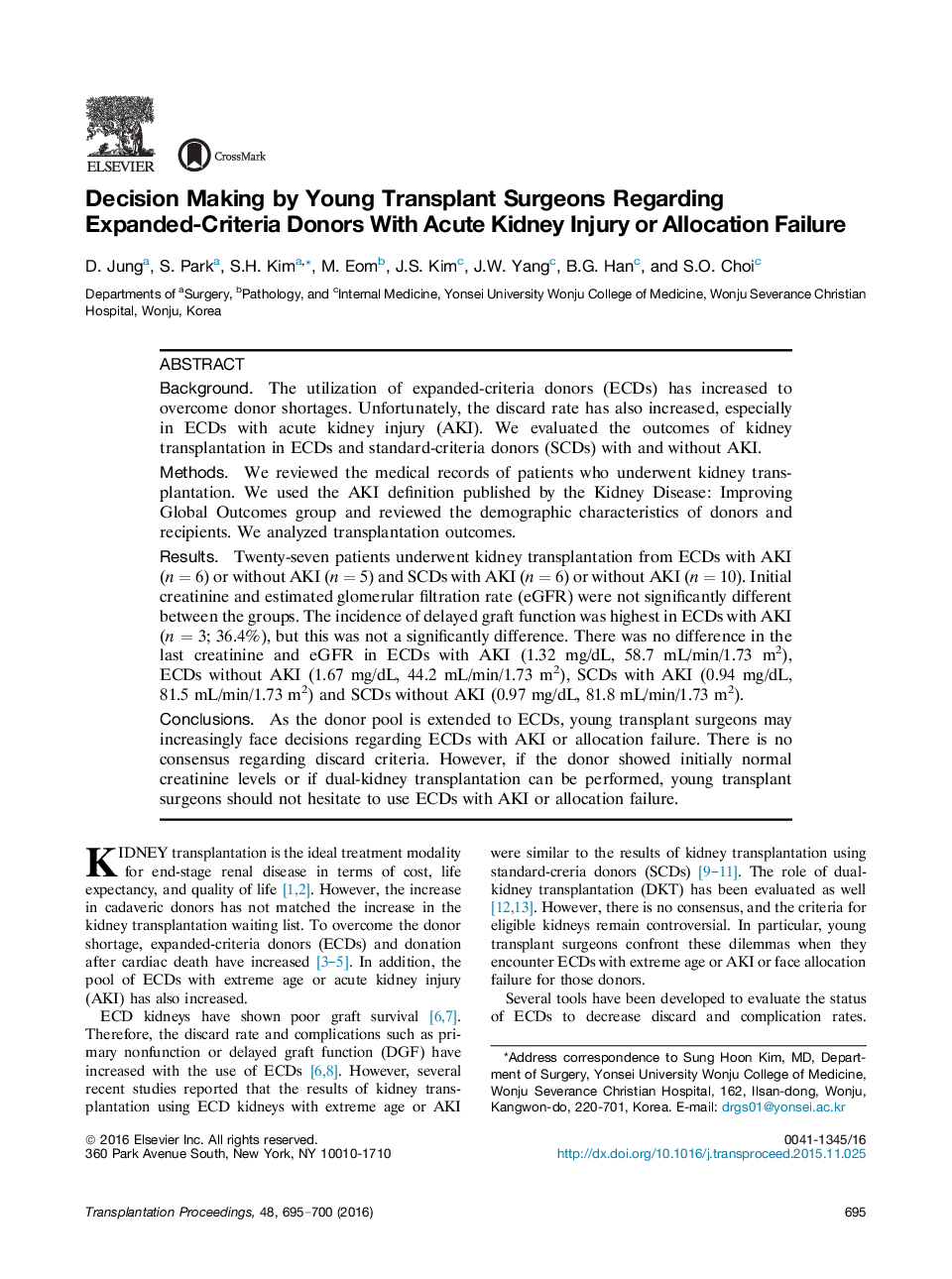| کد مقاله | کد نشریه | سال انتشار | مقاله انگلیسی | نسخه تمام متن |
|---|---|---|---|---|
| 6246363 | 1284493 | 2016 | 6 صفحه PDF | دانلود رایگان |
- The use of ECDs with AKI or allocation failure showed inferior results compared with the use of SCDs, but did not show inferior results or primary nonfunction compared with the use of ECDs without AKI and did not need dialysis at discharge.
- If the donor showed initially normal creatinine levels and normal morphologic shape according to ultrasonography, or if dual-kidney transplantation can be performed, young transplant surgeons should not hesitate to use ECDs with AKI or allocation failure.
BackgroundThe utilization of expanded-criteria donors (ECDs) has increased to overcome donor shortages. Unfortunately, the discard rate has also increased, especially in ECDs with acute kidney injury (AKI). We evaluated the outcomes of kidney transplantation in ECDs and standard-criteria donors (SCDs) with and without AKI.MethodsWe reviewed the medical records of patients who underwent kidney transplantation. We used the AKI definition published by the Kidney Disease: Improving Global Outcomes group and reviewed the demographic characteristics of donors and recipients. We analyzed transplantation outcomes.ResultsTwenty-seven patients underwent kidney transplantation from ECDs with AKI (n = 6) or without AKI (n = 5) and SCDs with AKI (n = 6) or without AKI (n = 10). Initial creatinine and estimated glomerular filtration rate (eGFR) were not significantly different between the groups. The incidence of delayed graft function was highest in ECDs with AKI (n = 3; 36.4%), but this was not a significantly difference. There was no difference in the last creatinine and eGFR in ECDs with AKI (1.32 mg/dL, 58.7 mL/min/1.73 m2), ECDs without AKI (1.67 mg/dL, 44.2 mL/min/1.73 m2), SCDs with AKI (0.94 mg/dL, 81.5 mL/min/1.73 m2) and SCDs without AKI (0.97 mg/dL, 81.8 mL/min/1.73 m2).ConclusionsAs the donor pool is extended to ECDs, young transplant surgeons may increasingly face decisions regarding ECDs with AKI or allocation failure. There is no consensus regarding discard criteria. However, if the donor showed initially normal creatinine levels or if dual-kidney transplantation can be performed, young transplant surgeons should not hesitate to use ECDs with AKI or allocation failure.
Journal: Transplantation Proceedings - Volume 48, Issue 3, April 2016, Pages 695-700
